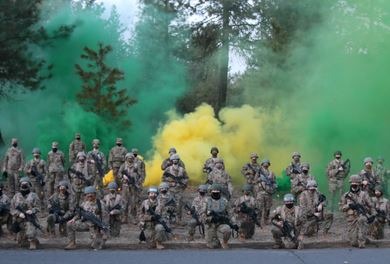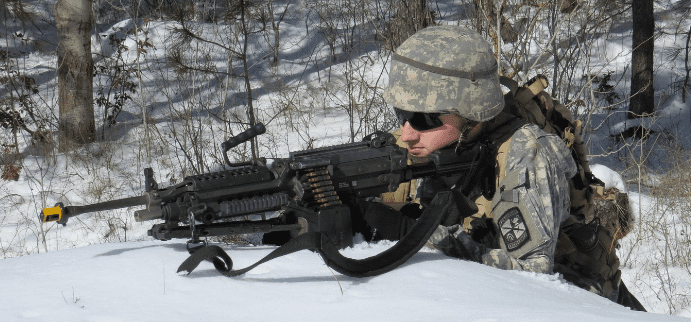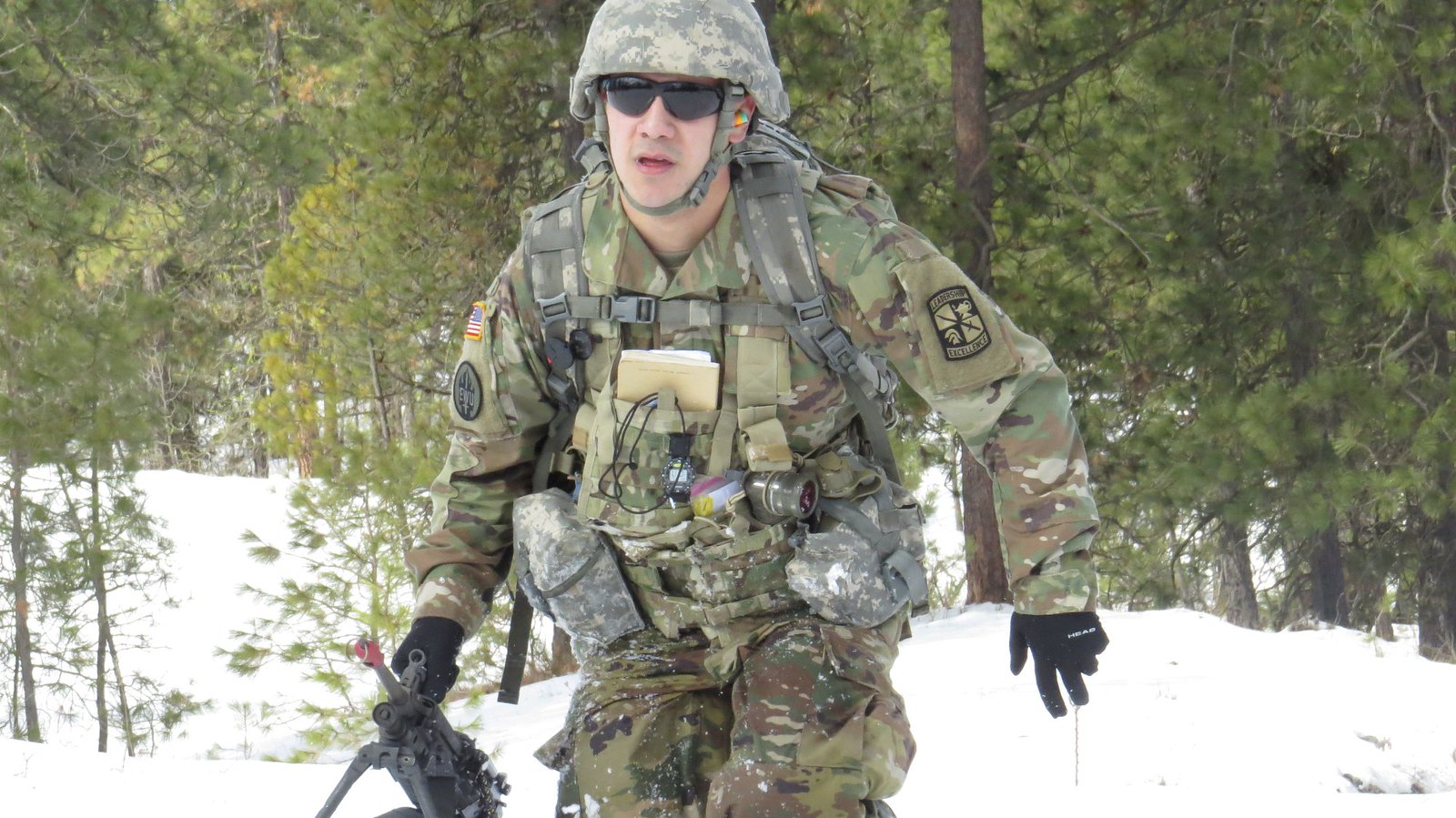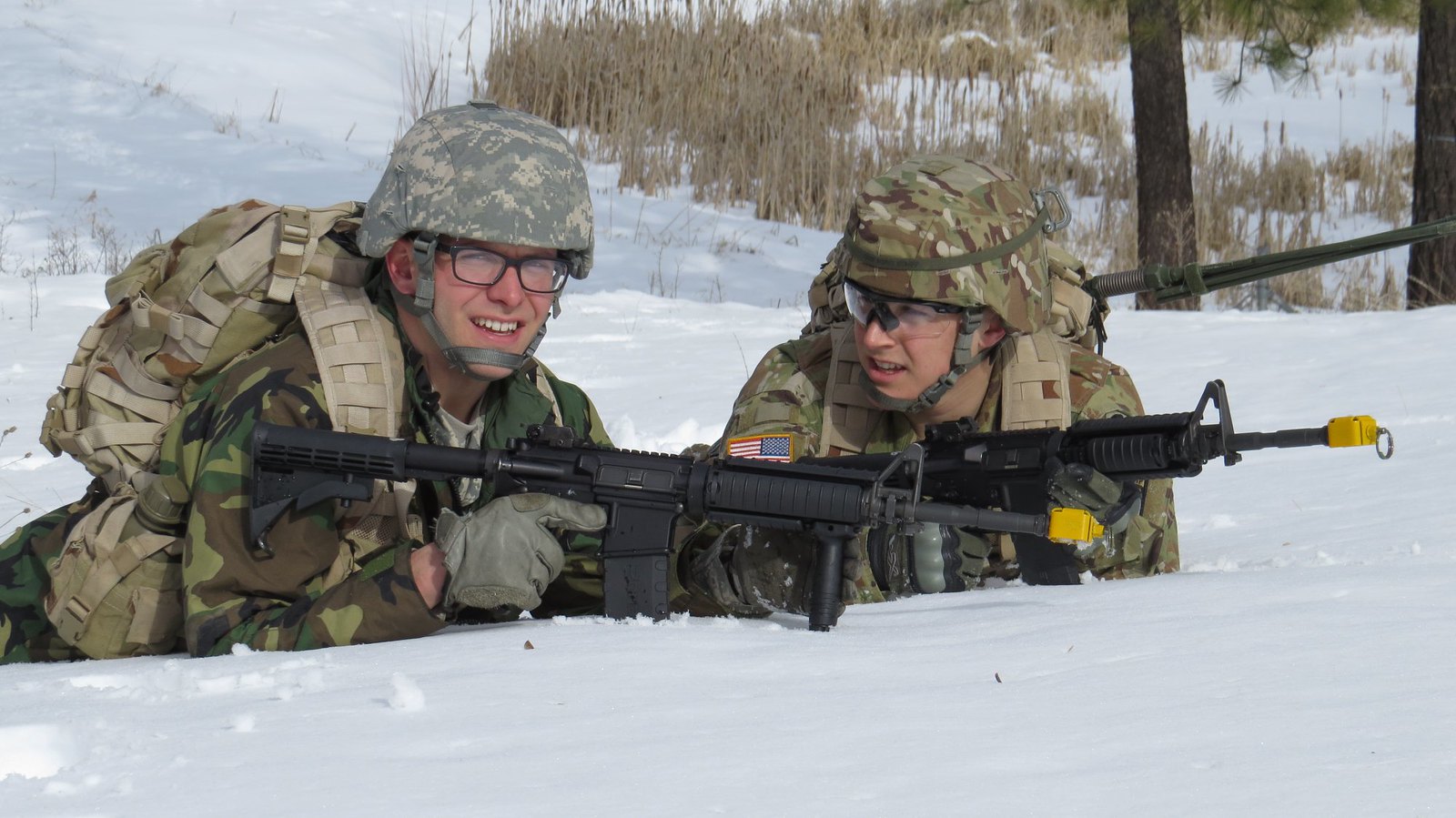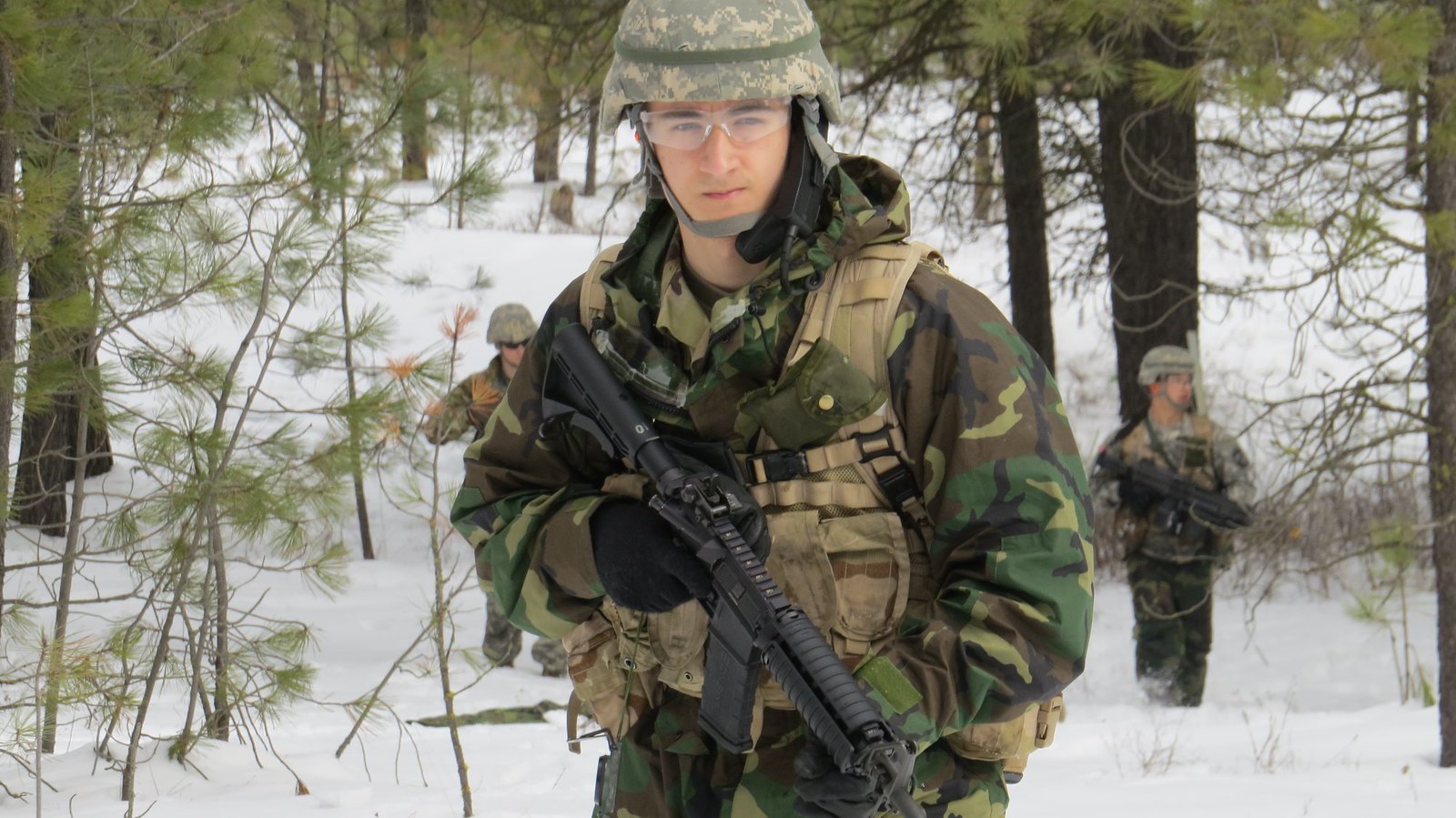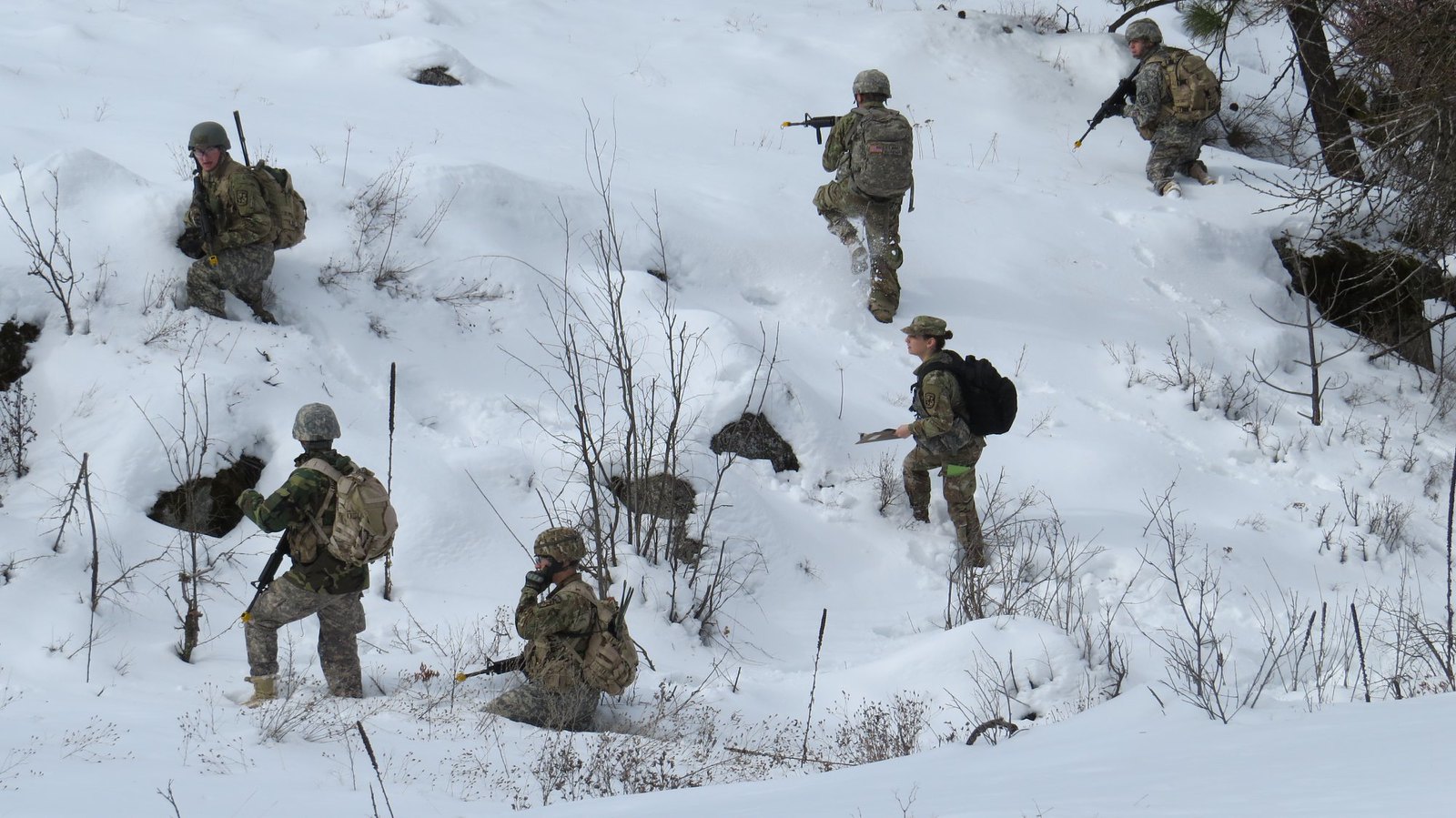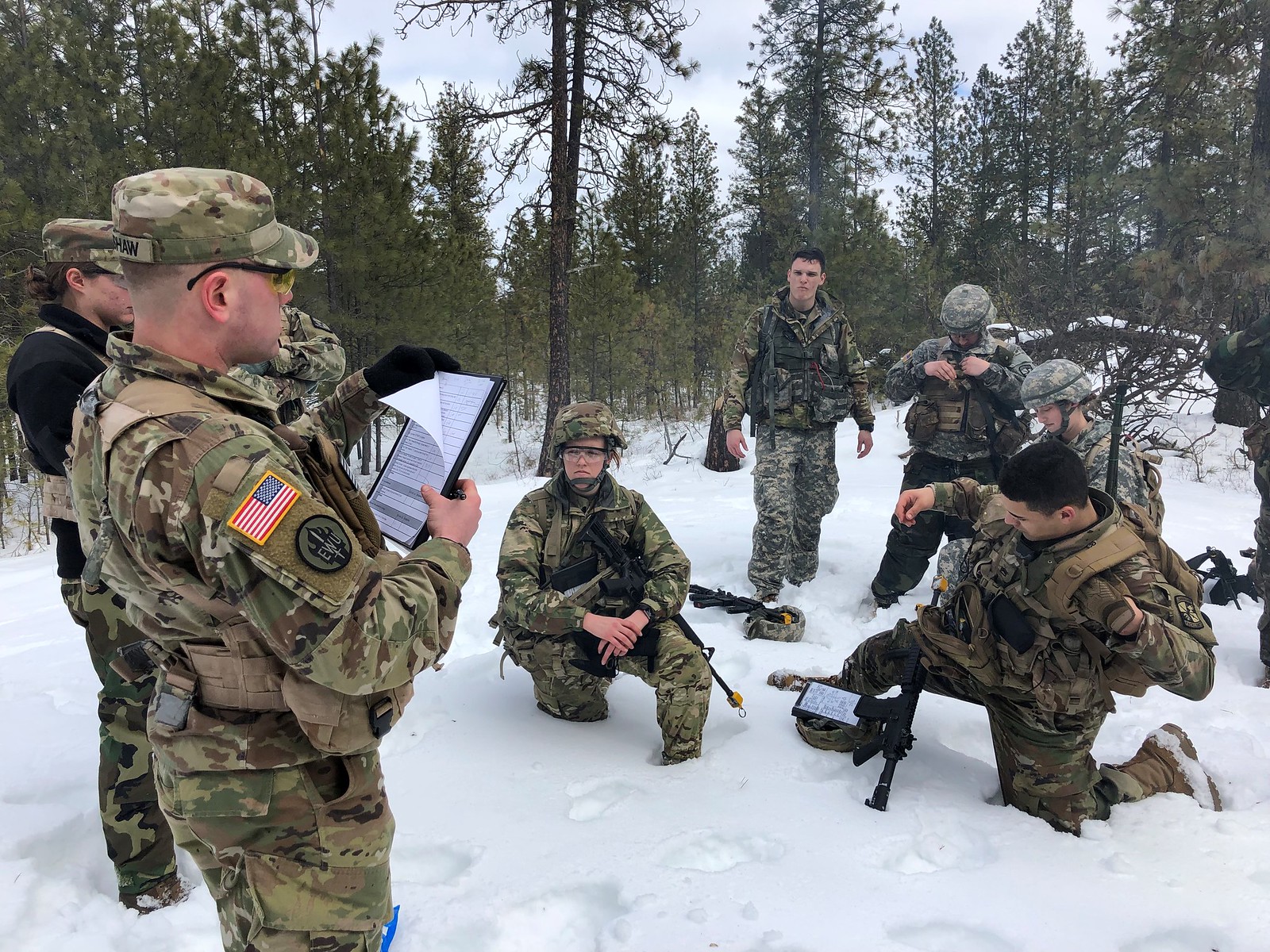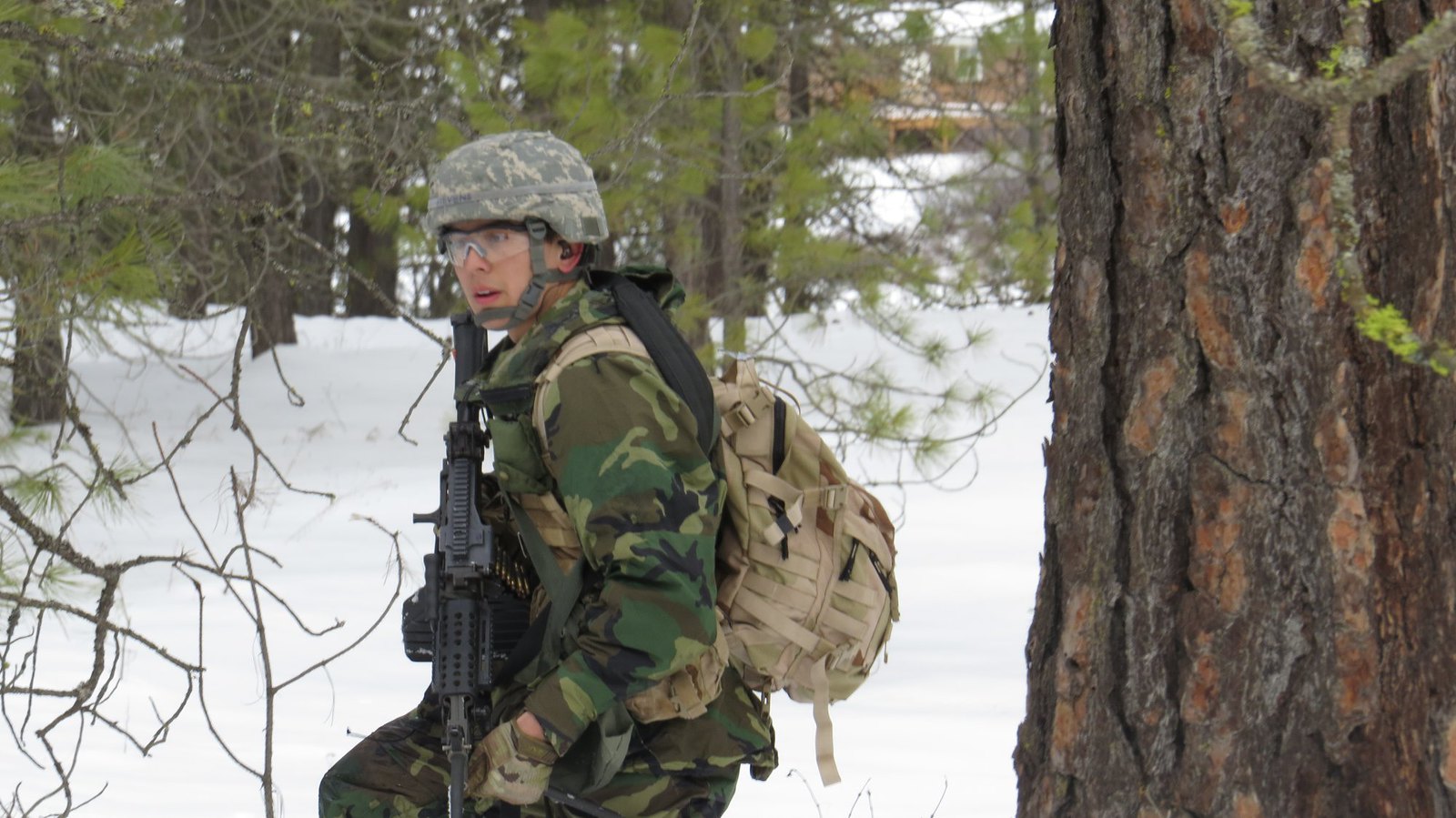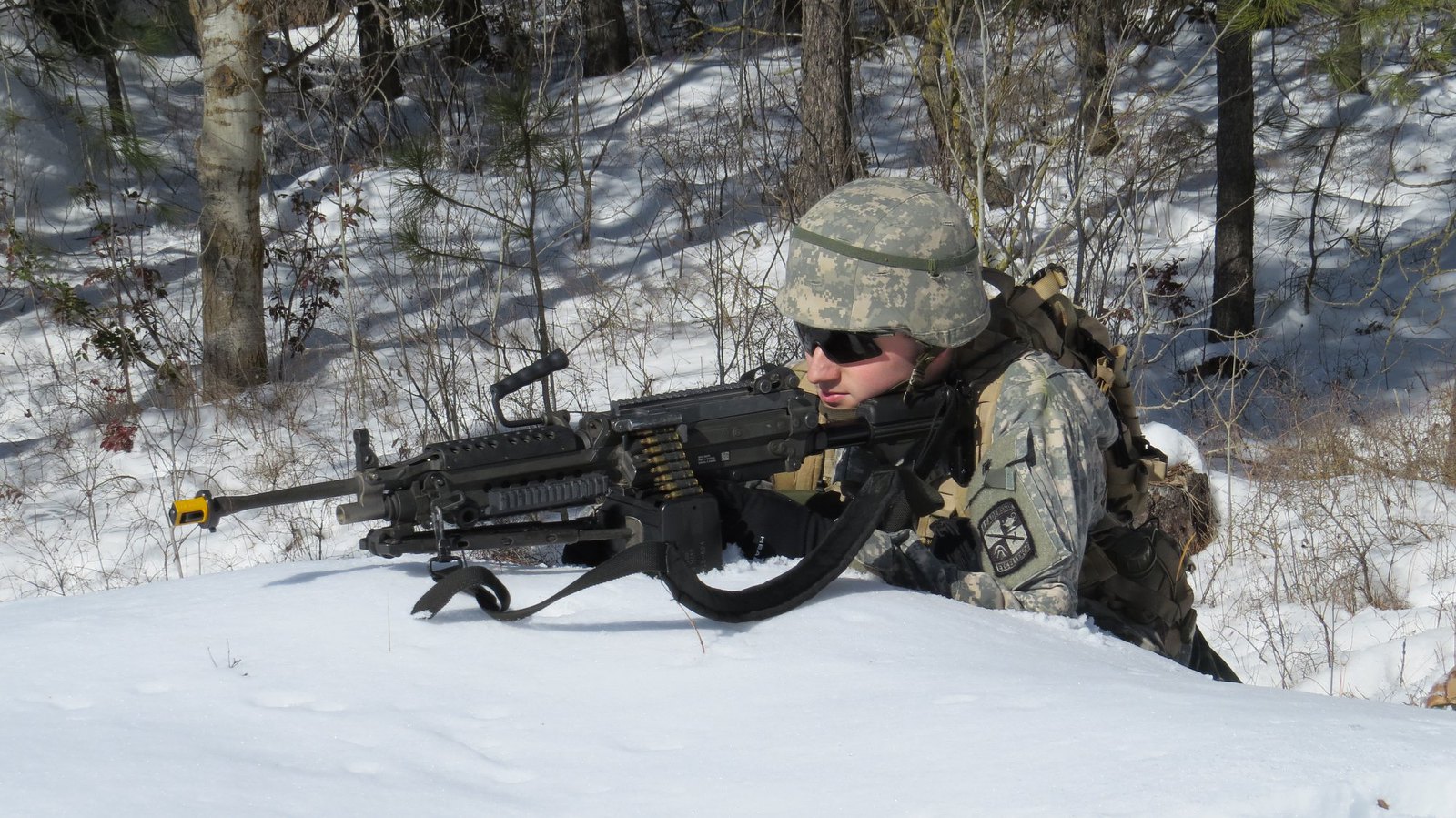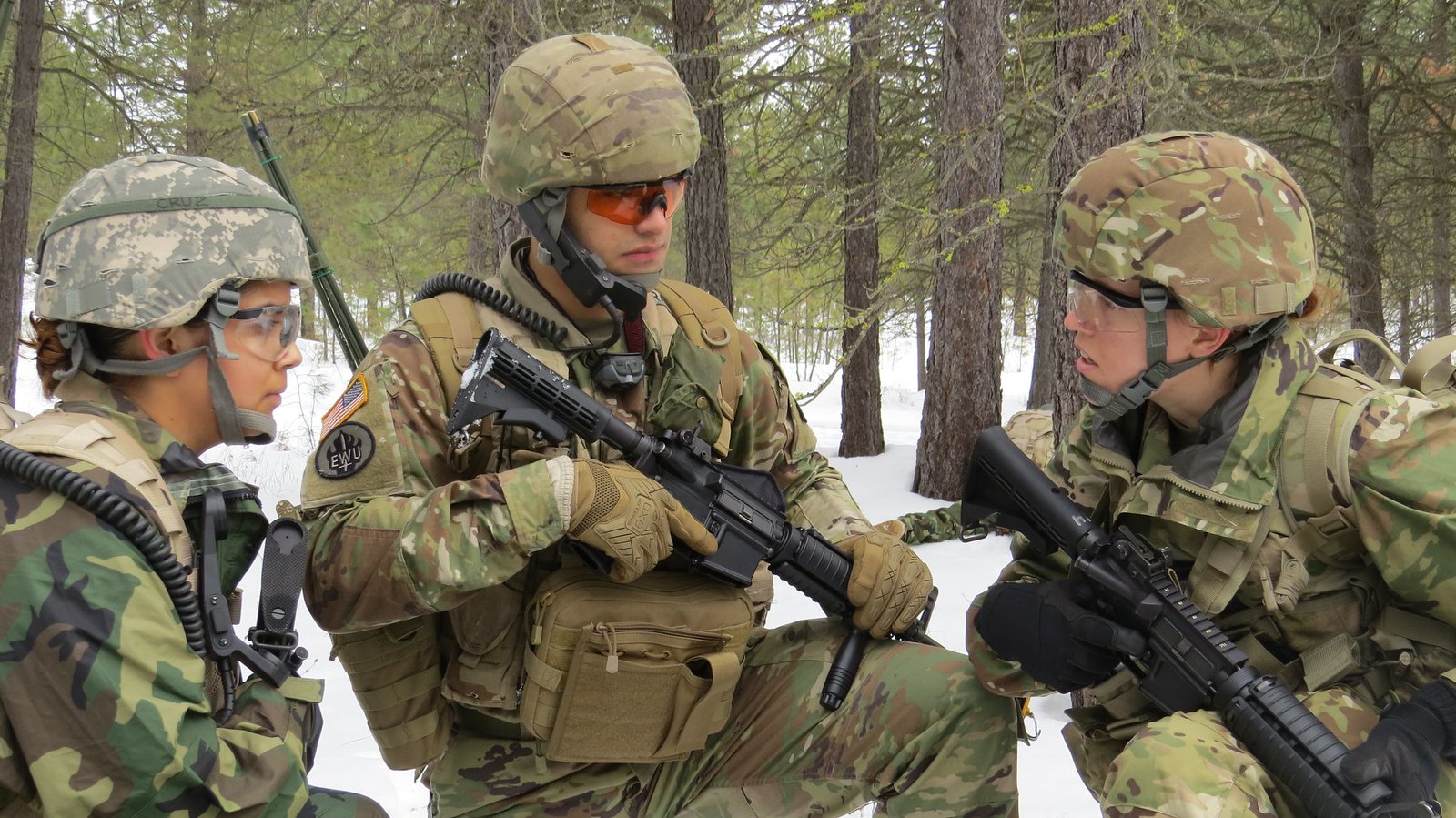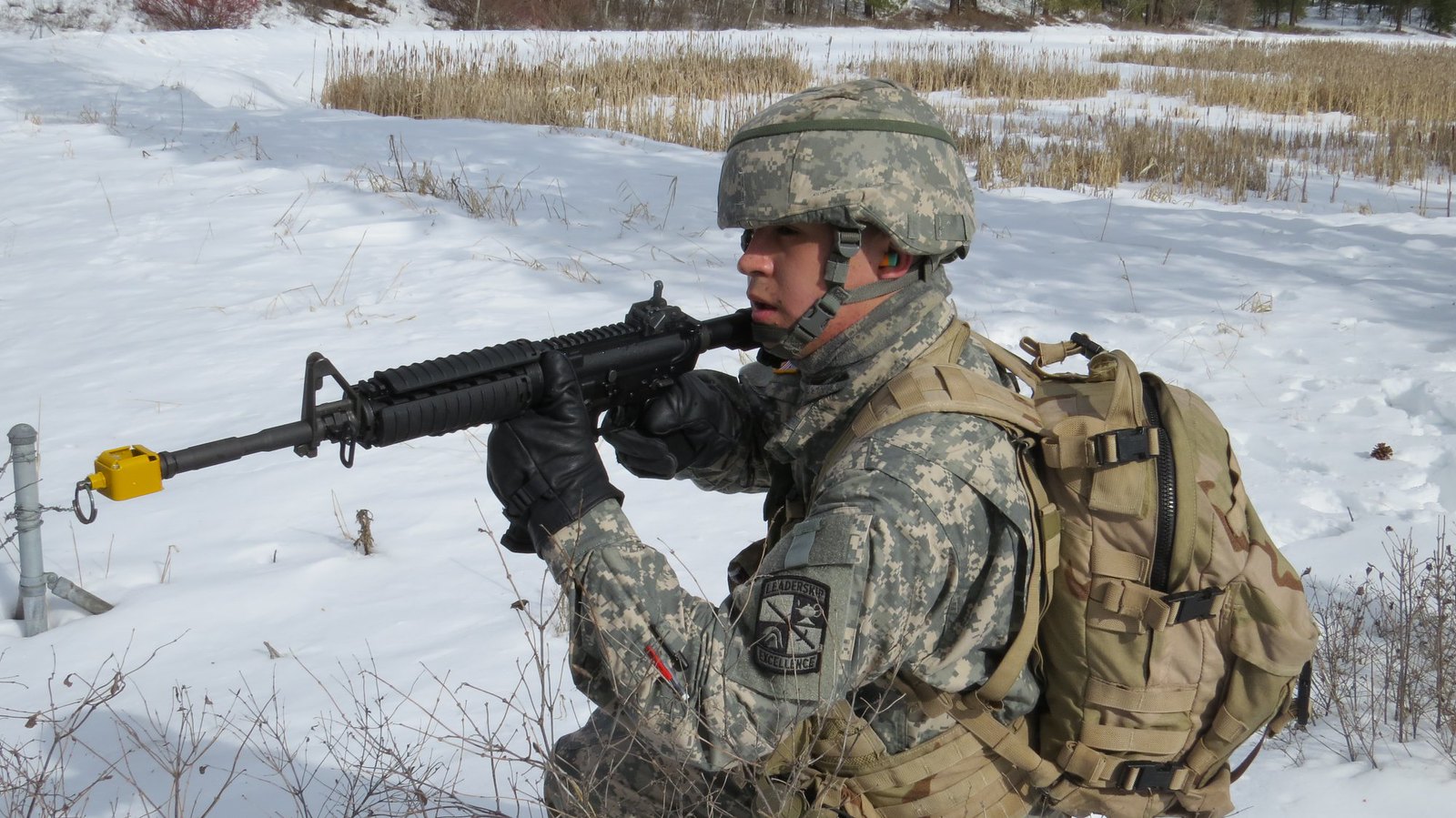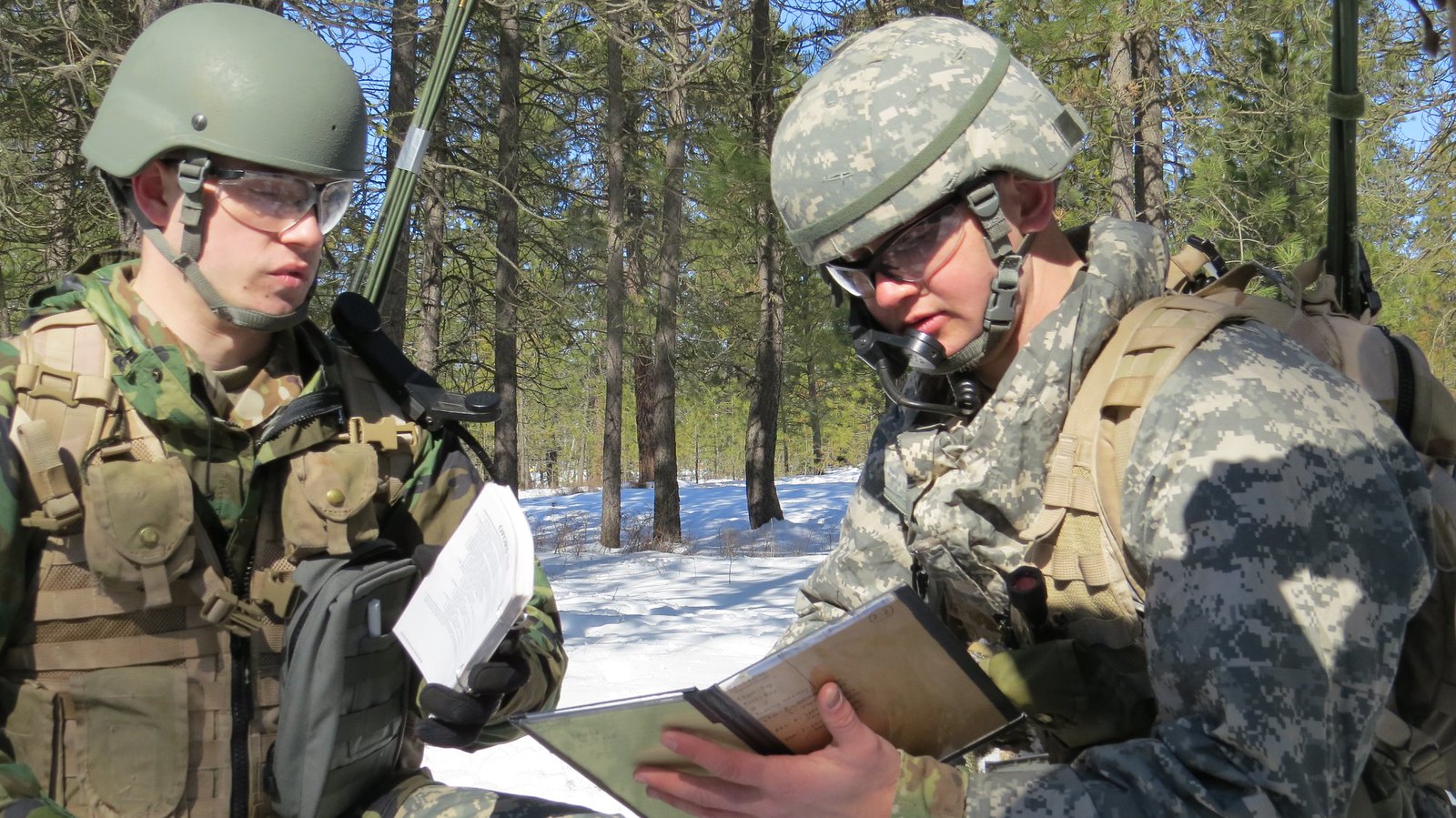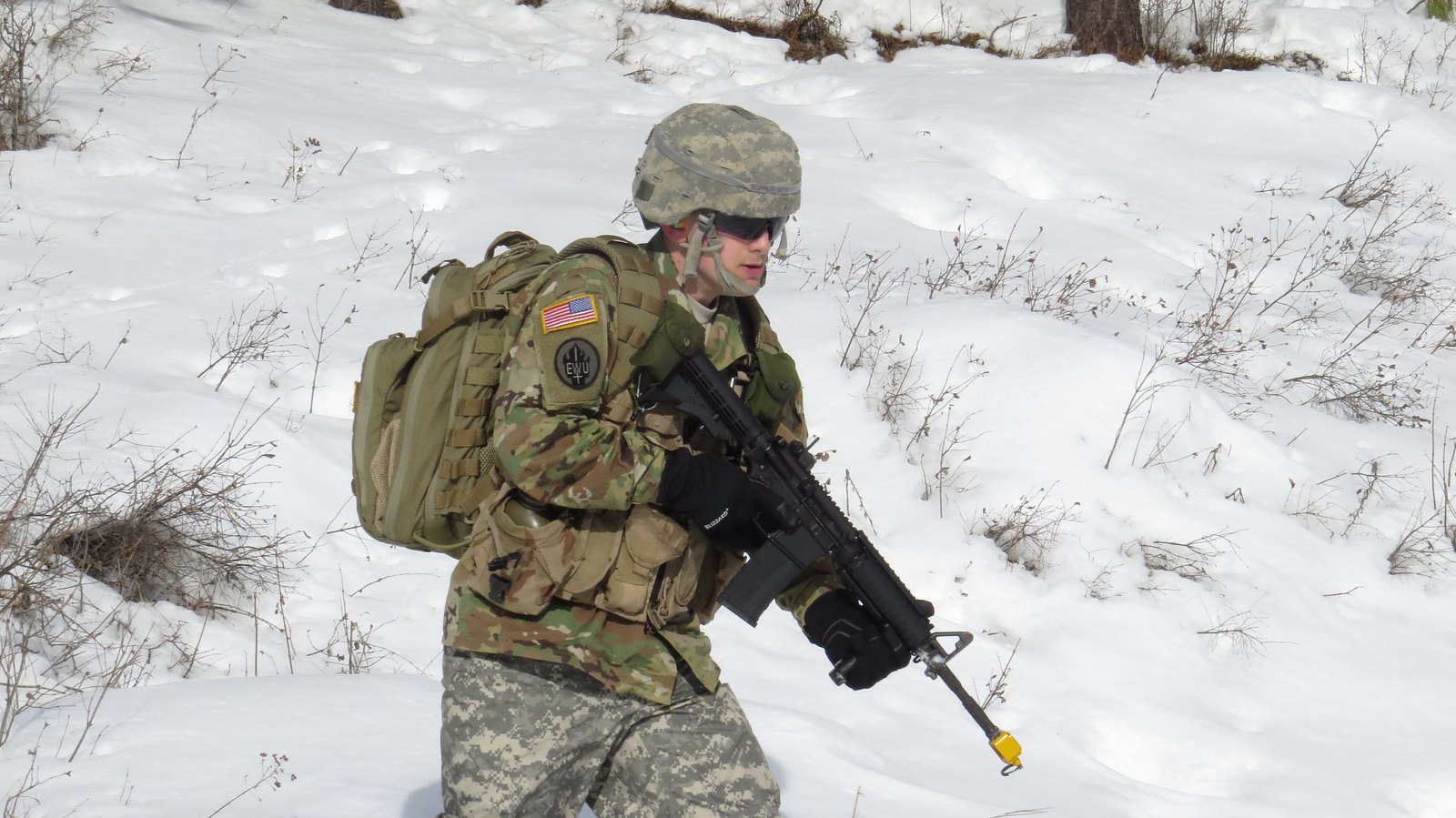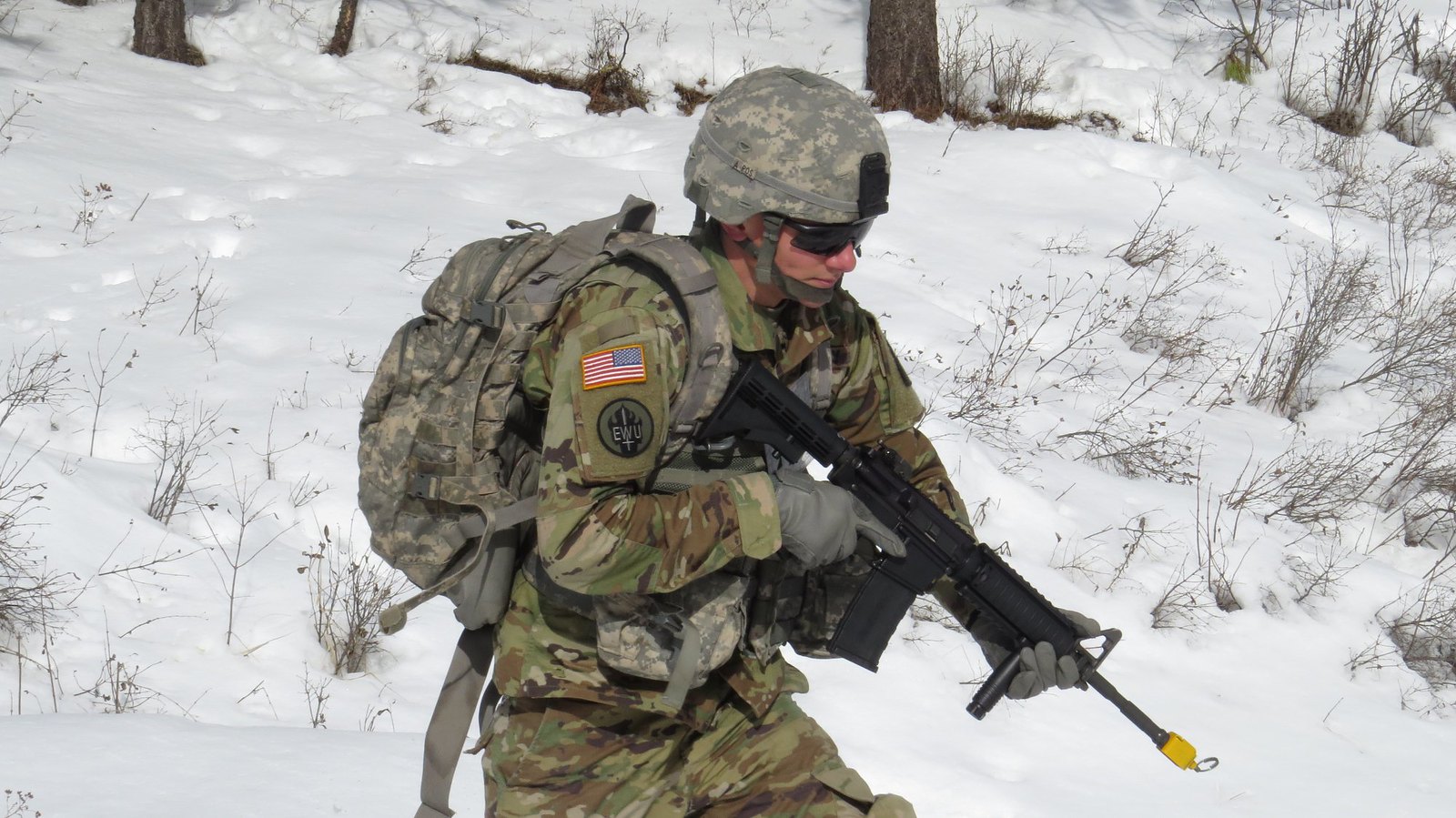From March 5-6, 2021, The “Fighting Eagles” battalion from the Reserve Officer Training Corps (ROTC) program at Eastern Washington University (EWU) conducted their winter field training exercise (FTX). This FTX was the culmination of all the training the Cadets have conducted at weekly Leadership Labs this quarter. The primary goal of the FTX was to test our MS-III (Junior) Cadets on leading a squad sized element and giving tactical experience to the MS-II (sophomore) and MS-I (freshman) Cadets in a field environment.

On Friday the Cadets and Cadre worked to setup the lanes, draw rifles, and ammunition. On Saturday morning the Cadets then met up at 0400 at Cadet Hall and deployed out to the Cheney Waterworks for the FTX. At the Waterworks there was 5 training lanes that the Cadets would be evaluated on during the FTX:
- movement to contact
- squad attack
- ambush
- area recon
- defense
The Cadets for the FTX were issued M4 rifles and M249 Squad Automatic Weapons (SAW) with blank rounds along with SINCGARS radios. Carrying the real weapons, blank ammunition, and tactical radios allowed the Cadets to experience what it is like to carry the additional weight for an extended period of time. The weapons loaded with blank ammunition also allowed the Cadets to practice weapons safety by enforcing procedures to prevent negligent discharges.
For the Movement to Contact lane, the squad leader received the mission and went through their troop leading procedures (TLPs) to execute the mission. As the squad moved through the lane, they received fire from an enemy Opposing Force (OPFOR) composed of MS-IV and National Guard role players. Once the squad received fire, the squad leader maneuvered the squad to counterattack the enemy and eliminate the threat.
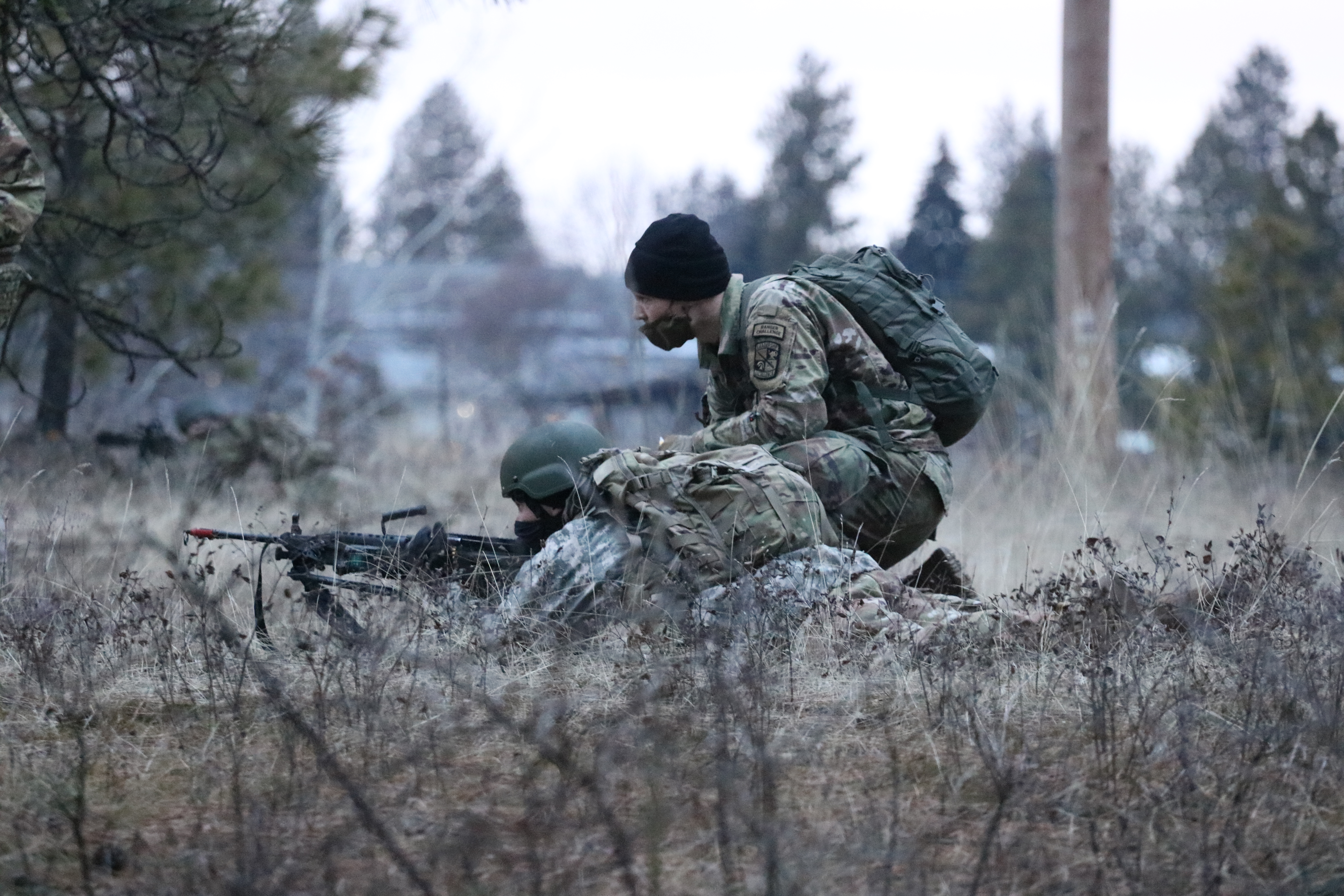
For the Squad Attack lane the squad leader knew the exact location of the OPFOR. Once the squad leader finished their planning and rehearsals, they would lead their squad near the location and set up their support by fire and assaulting element. Once the squad leader initiated the fight, the support by fire element would fire on the enemy while the assaulting element would go through the objective to clear it. The squad attack lane was made extra hard due to the need stealthy approach the enemy without being detected while simultaneously trying to get around a small lake.

For the Ambush lane the squad leader had to position their squad on the objective where the enemy will be traveling through. After planning, the squad leader would position their squad in the path that the OPFOR would be walking through. Once the OPFOR entered a designated kill zone the squad would initiate the ambush. An added challenge for this lane was that the OPFOR after being attacked would retreat into an old junk yard. This meant the Cadets had to maneuver and fight through the junkyard to eliminate the enemy threat.

The next lane was the Area Recon. Here the squad leader had to plan for a mission where their squad had to locate an enemy force without detected. While observing the enemy, the Cadets had to collect Priority Intelligence Requirements (PIR) which were then sent to the higher command element via radio. The added challenge on this lane was that the Cadets conducting the recon had to cross a road which is known tactically as a linear danger area without being detected.

The final lane was squad level defense. While in a patrol base the squad was attacked by the OPFOR. To help the Cadets detect the OPFOR trying to infiltrate their perimeter, trip wires that ignited signal flares were used. This added extra realism to the lane that feature much fire, smoke, and noise in an effort to create a chaotic environment to challenge the Cadets.

With a very early morning start, cold temperatures, and constant activity, the EWU ROTC Cadets where tested both physically and mentally during the Winter FTX. This training is used to prepare our MS-III Cadets for Advance Camp at Ft. Knox, Kentucky this summer. Advanced Camp is a requirement for all MS-III Cadets to pass in order to commission as Army officers. The 37-day Advanced Camp is why the Fighting Eagles battalion conducts challenging training to prepare the MS-III Cadets as much as possible for camp. Next quarter the battalion has even more challenging training planned in conjunction with Gonzaga University ROTC to further prepare the Cadets to succeed during summer training.

Go ROTC! Go Fighting Eags!
Note: You can see and download more pictures from the Winter FTX from our EWU Army ROTC Flickr page.
